Mahdi Abolghasemi
Local vs. Global Models for Hierarchical Forecasting
Nov 10, 2024
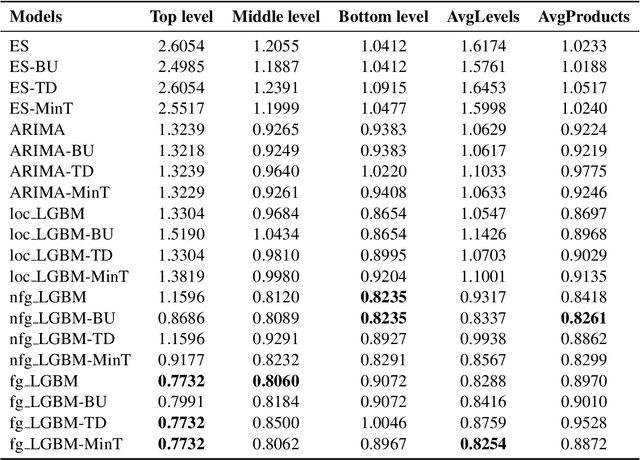
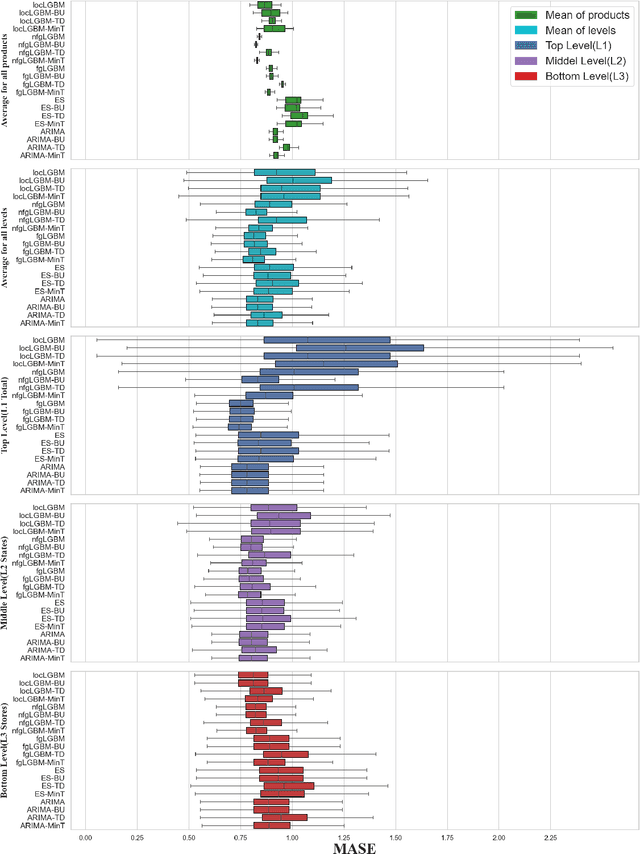
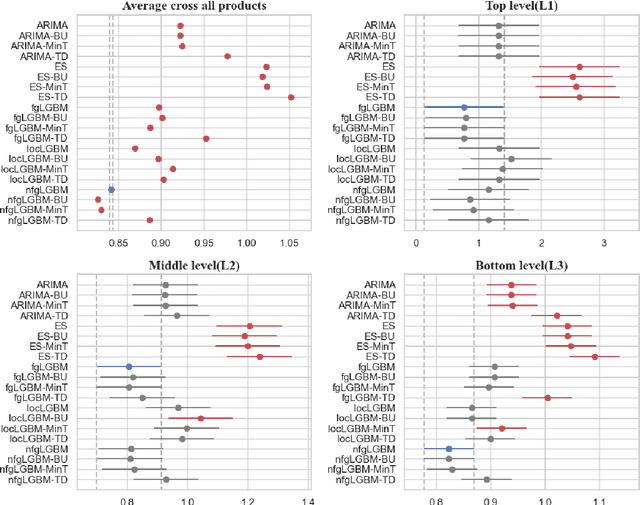
Abstract:Hierarchical time series forecasting plays a crucial role in decision-making in various domains while presenting significant challenges for modelling as they involve multiple levels of aggregation, constraints, and availability of information. This study explores the influence of distinct information utilisation on the accuracy of hierarchical forecasts, proposing and evaluating locals and a range of Global Forecasting Models (GFMs). In contrast to local models, which forecast each series independently, we develop GFMs to exploit cross-series and cross-hierarchies information, improving both forecasting performance and computational efficiency. We employ reconciliation methods to ensure coherency in forecasts and use the Mean Absolute Scaled Error (MASE) and Multiple Comparisons with the Best (MCB) tests to assess statistical significance. The findings indicate that GFMs possess significant advantages for hierarchical forecasting, providing more accurate and computationally efficient solutions across different levels in a hierarchy. Two specific GFMs based on LightGBM are introduced, demonstrating superior accuracy and lower model complexity than their counterpart local models and conventional methods such as Exponential Smoothing (ES) and Autoregressive Integrated Moving Average (ARIMA).
Digital Twins for forecasting and decision optimisation with machine learning: applications in wastewater treatment
Apr 23, 2024Abstract:Prediction and optimisation are two widely used techniques that have found many applications in solving real-world problems. While prediction is concerned with estimating the unknown future values of a variable, optimisation is concerned with optimising the decision given all the available data. These methods are used together to solve problems for sequential decision-making where often we need to predict the future values of variables and then use them for determining the optimal decisions. This paradigm is known as forecast and optimise and has numerous applications, e.g., forecast demand for a product and then optimise inventory, forecast energy demand and schedule generations, forecast demand for a service and schedule staff, to name a few. In this extended abstract, we review a digital twin that was developed and applied in wastewater treatment in Urban Utility to improve their operational efficiency. While the current study is tailored to the case study problem, the underlying principles can be used to solve similar problems in other domains.
Approximating Solutions to the Knapsack Problem using the Lagrangian Dual Framework
Dec 06, 2023Abstract:The Knapsack Problem is a classic problem in combinatorial optimisation. Solving these problems may be computationally expensive. Recent years have seen a growing interest in the use of deep learning methods to approximate the solutions to such problems. A core problem is how to enforce or encourage constraint satisfaction in predicted solutions. A promising approach for predicting solutions to constrained optimisation problems is the Lagrangian Dual Framework which builds on the method of Lagrangian Relaxation. In this paper we develop neural network models to approximate Knapsack Problem solutions using the Lagrangian Dual Framework while improving constraint satisfaction. We explore the problems of output interpretation and model selection within this context. Experimental results show strong constraint satisfaction with a minor reduction of optimality as compared to a baseline neural network which does not explicitly model the constraints.
How to forecast power generation in wind farms? Insights from leveraging hierarchical structure
Aug 07, 2023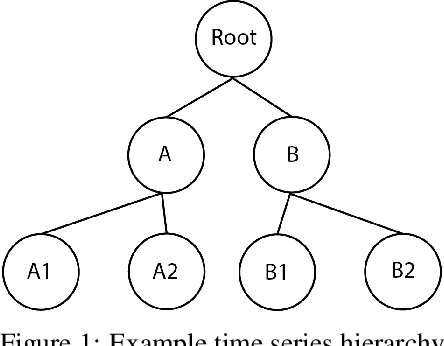
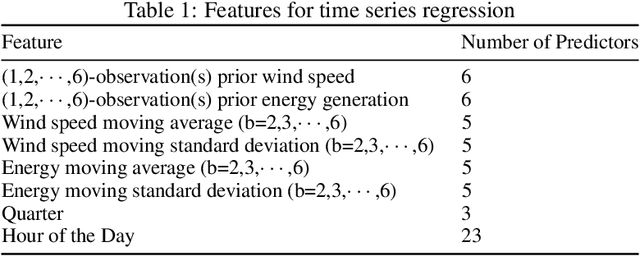

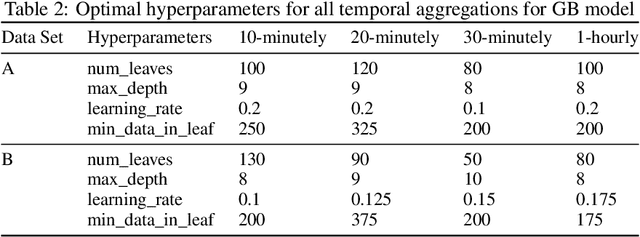
Abstract:Forecasting of renewable energy generation provides key insights which may help with decision-making towards global decarbonisation. Renewable energy generation can often be represented through cross-sectional hierarchies, whereby a single farm may have multiple individual generators. Hierarchical forecasting through reconciliation has demonstrated a significant increase in the quality of forecasts both theoretically and empirically. However, it is not evident whether forecasts generated by individual temporal and cross-sectional aggregation can be superior to integrated cross-temporal forecasts and to individual forecasts on more granular data. In this study, we investigate the accuracies of different cross-sectional and cross-temporal reconciliation methods using both linear regression and gradient boosting machine learning for forecasting wind farm power generation. We found that cross-temporal reconciliation is superior to individual cross-sectional reconciliation at multiple temporal aggregations. Cross-temporally reconciled machine learning base forecasts also demonstrated a high accuracy at coarser temporal granularities, which may encourage adoption for short-term wind forecasts. We also show that linear regression can outperform machine learning models across most levels in cross-sectional wind time series.
Comparison and Evaluation of Methods for a Predict+Optimize Problem in Renewable Energy
Dec 21, 2022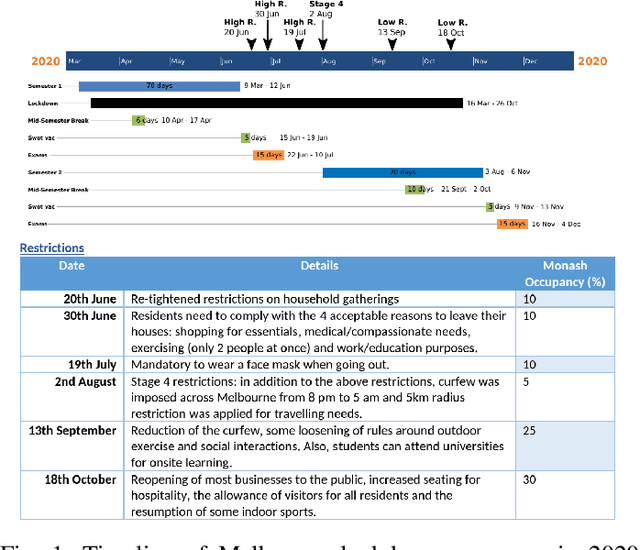
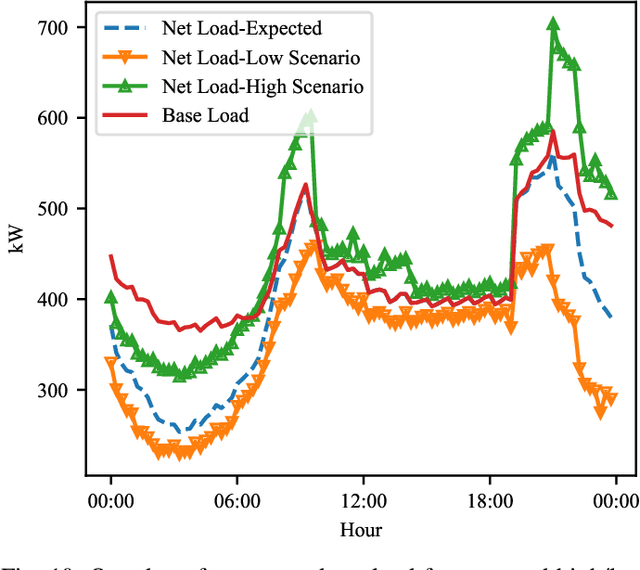
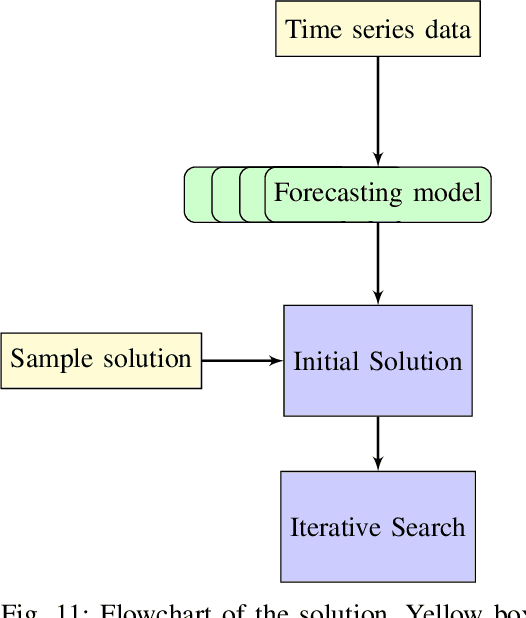
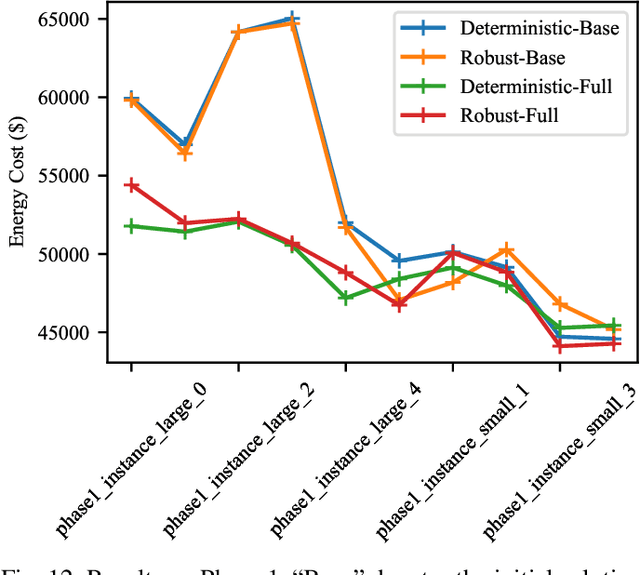
Abstract:Algorithms that involve both forecasting and optimization are at the core of solutions to many difficult real-world problems, such as in supply chains (inventory optimization), traffic, and in the transition towards carbon-free energy generation in battery/load/production scheduling in sustainable energy systems. Typically, in these scenarios we want to solve an optimization problem that depends on unknown future values, which therefore need to be forecast. As both forecasting and optimization are difficult problems in their own right, relatively few research has been done in this area. This paper presents the findings of the ``IEEE-CIS Technical Challenge on Predict+Optimize for Renewable Energy Scheduling," held in 2021. We present a comparison and evaluation of the seven highest-ranked solutions in the competition, to provide researchers with a benchmark problem and to establish the state of the art for this benchmark, with the aim to foster and facilitate research in this area. The competition used data from the Monash Microgrid, as well as weather data and energy market data. It then focused on two main challenges: forecasting renewable energy production and demand, and obtaining an optimal schedule for the activities (lectures) and on-site batteries that lead to the lowest cost of energy. The most accurate forecasts were obtained by gradient-boosted tree and random forest models, and optimization was mostly performed using mixed integer linear and quadratic programming. The winning method predicted different scenarios and optimized over all scenarios jointly using a sample average approximation method.
The intersection of machine learning with forecasting and optimisation: theory and applications
Nov 24, 2022Abstract:Forecasting and optimisation are two major fields of operations research that are widely used in practice. These methods have contributed to each other growth in several ways. However, the nature of the relationship between these two fields and integrating them have not been explored or understood enough. We advocate the integration of these two fields and explore several problems that require both forecasting and optimisation to deal with the uncertainties. We further investigate some of the methodologies that lie at the intersection of machine learning with prediction and optimisation to address real-world problems. Finally, we provide several research directions for those interested to work in this domain.
How to predict and optimise with asymmetric error metrics
Nov 24, 2022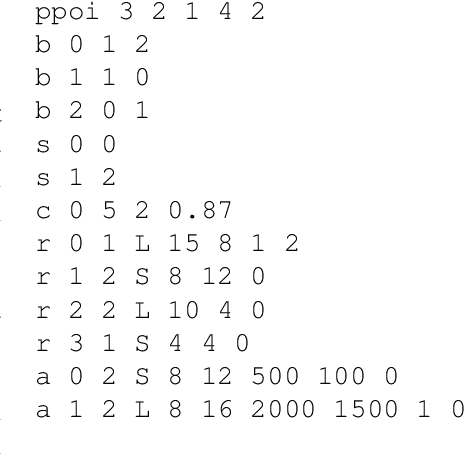
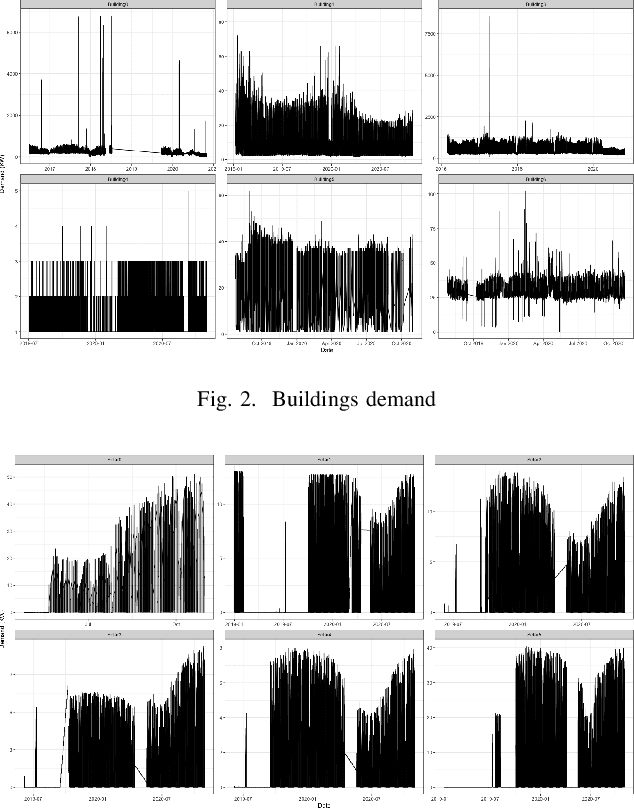
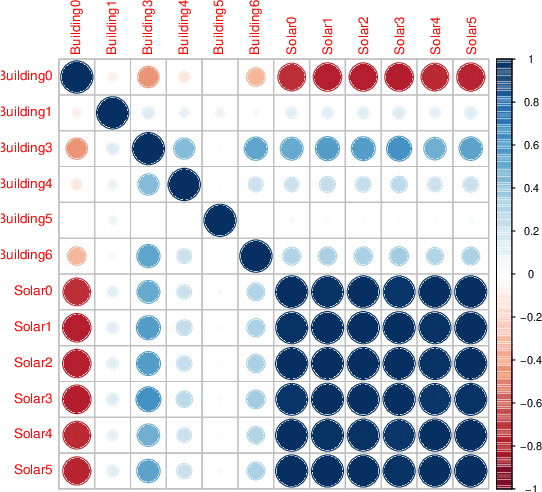
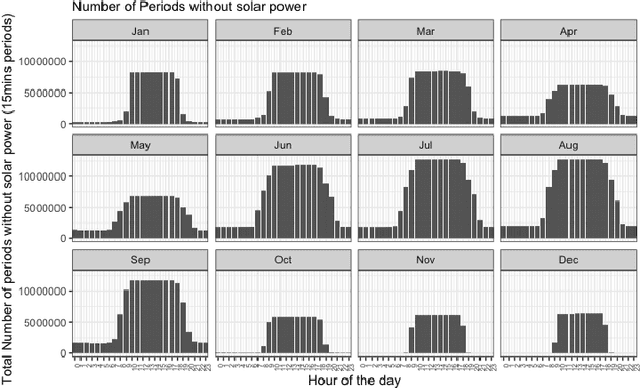
Abstract:In this paper, we examine the concept of the predict and optimise problem with specific reference to the third Technical Challenge of the IEEE Computational Intelligence Society. In this competition, entrants were asked to forecast building energy use and solar generation at six buildings and six solar installations, and then use their forecast to optimize energy cost while scheduling classes and batteries over a month. We examine the possible effect of underforecasting and overforecasting and asymmetric errors on the optimisation cost. We explore the different nature of loss functions for the prediction and optimisation phase and propose to adjust the final forecasts for a better optimisation cost. We report that while there is a positive correlation between these two, more appropriate loss functions can be used to optimise the costs associated with final decisions.
Forecasting sales with Bayesian networks: a case study of a supermarket product in the presence of promotions
Dec 16, 2021

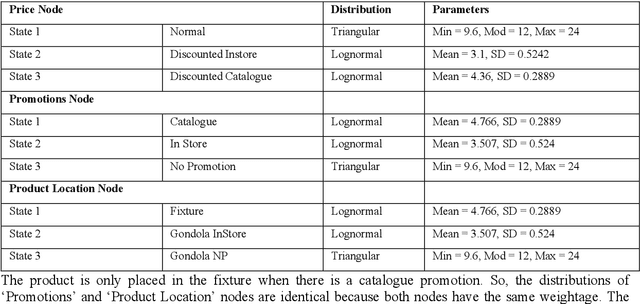

Abstract:Sales forecasting is the prerequisite for a lot of managerial decisions such as production planning, material resource planning and budgeting in the supply chain. Promotions are one of the most important business strategies that are often used to boost sales. While promotions are attractive for generating demand, it is often difficult to forecast demand in their presence. In the past few decades, several quantitative models have been developed to forecast sales including statistical and machine learning models. However, these methods may not be adequate to account for all the internal and external factors that may impact sales. As a result, qualitative models have been adopted along with quantitative methods as consulting experts has been proven to improve forecast accuracy by providing contextual information. Such models are being used extensively to account for factors that can lead to a rapid change in sales, such as during promotions. In this paper, we aim to use Bayesian Networks to forecast promotional sales where a combination of factors such as price, type of promotions, and product location impacts sales. We choose to develop a BN model because BN models essentially have the capability to combine various qualitative and quantitative factors with causal forms, making it an attractive tool for sales forecasting during promotions. This can be used to adjust a company's promotional strategy in the context of this case study. We gather sales data for a particular product from a retailer that sells products in Australia. We develop a Bayesian Network for this product and validate our results by empirical analysis. This paper confirms that BNs can be effectively used to forecast sales, especially during promotions. In the end, we provide some research avenues for using BNs in forecasting sales.
State-of-the-art predictive and prescriptive analytics for IEEE CIS 3rd Technical Challenge
Dec 07, 2021Abstract:In this paper, we describe our proposed methodology to approach the predict+optimise challenge introduced in the IEEE CIS 3rd Technical Challenge. The predictive model employs an ensemble of LightGBM models and the prescriptive analysis employs mathematical optimisation to efficiently prescribe solutions that minimise the average cost over multiple scenarios. Our solutions ranked 1st in the optimisation and 2nd in the prediction challenge of the competition.
How to effectively use machine learning models to predict the solutions for optimization problems: lessons from loss function
May 14, 2021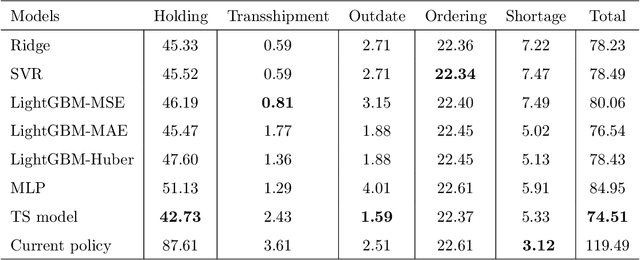
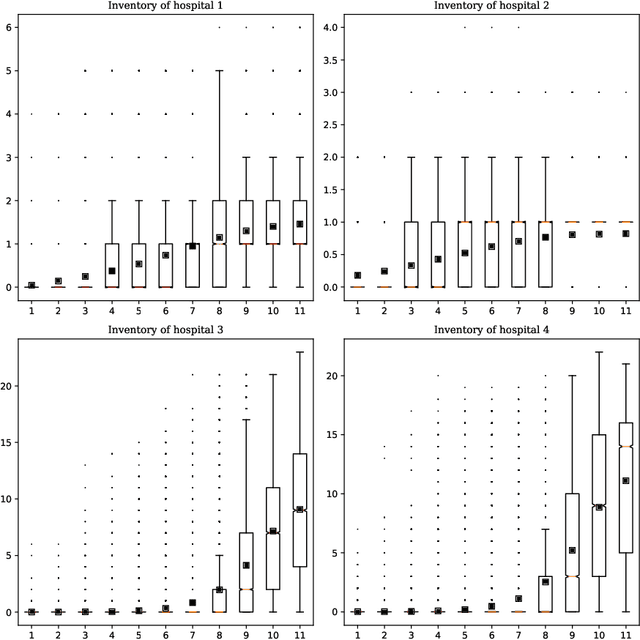
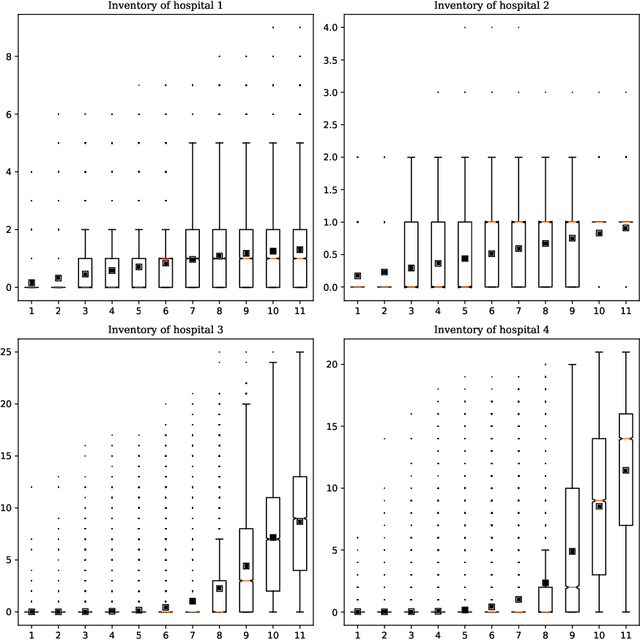

Abstract:Using machine learning in solving constraint optimization and combinatorial problems is becoming an active research area in both computer science and operations research communities. This paper aims to predict a good solution for constraint optimization problems using advanced machine learning techniques. It extends the work of \cite{abbasi2020predicting} to use machine learning models for predicting the solution of large-scaled stochastic optimization models by examining more advanced algorithms and various costs associated with the predicted values of decision variables. It also investigates the importance of loss function and error criterion in machine learning models where they are used for predicting solutions of optimization problems. We use a blood transshipment problem as the case study. The results for the case study show that LightGBM provides promising solutions and outperforms other machine learning models used by \cite{abbasi2020predicting} specially when mean absolute deviation criterion is used.
 Add to Chrome
Add to Chrome Add to Firefox
Add to Firefox Add to Edge
Add to Edge